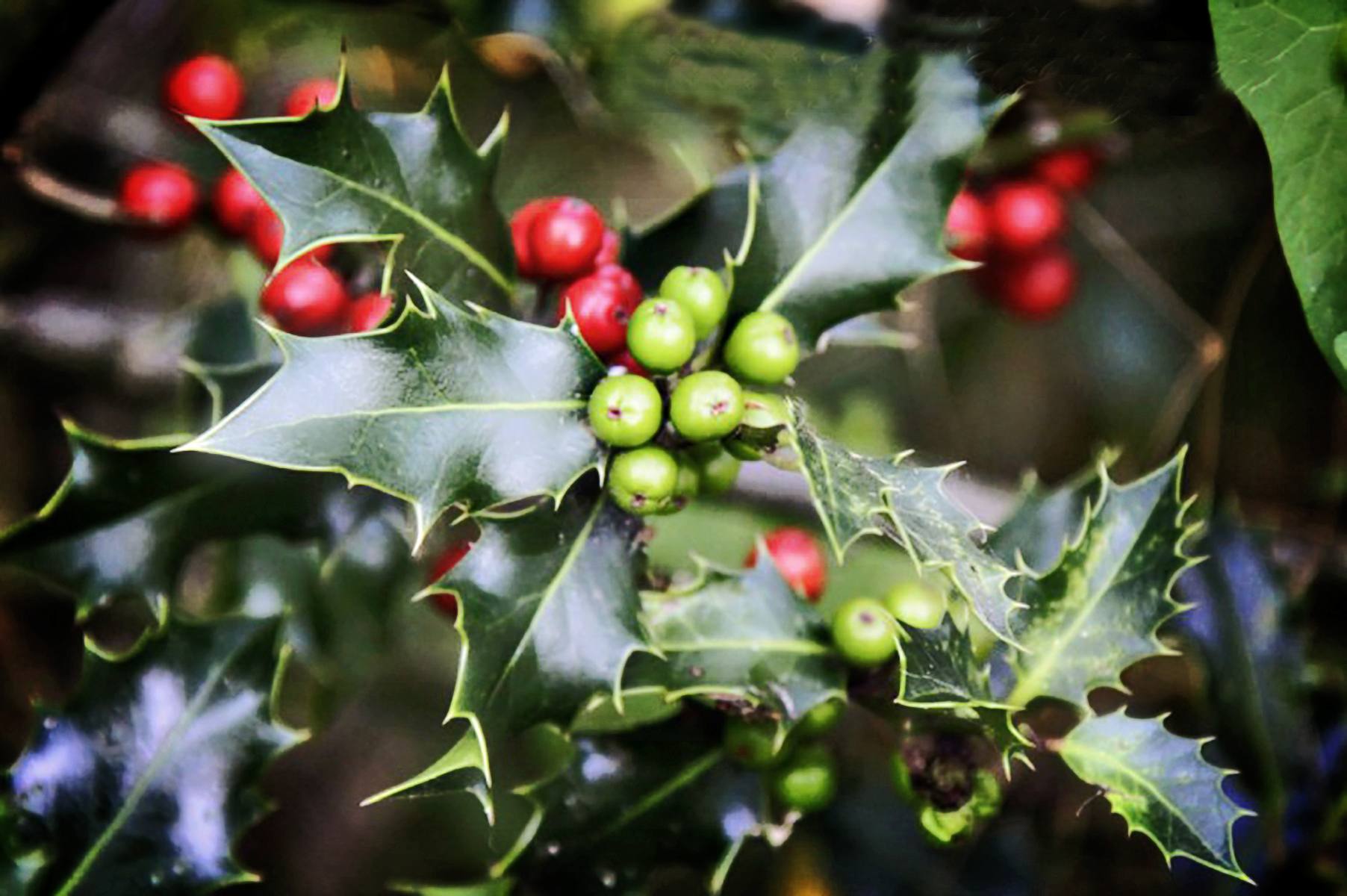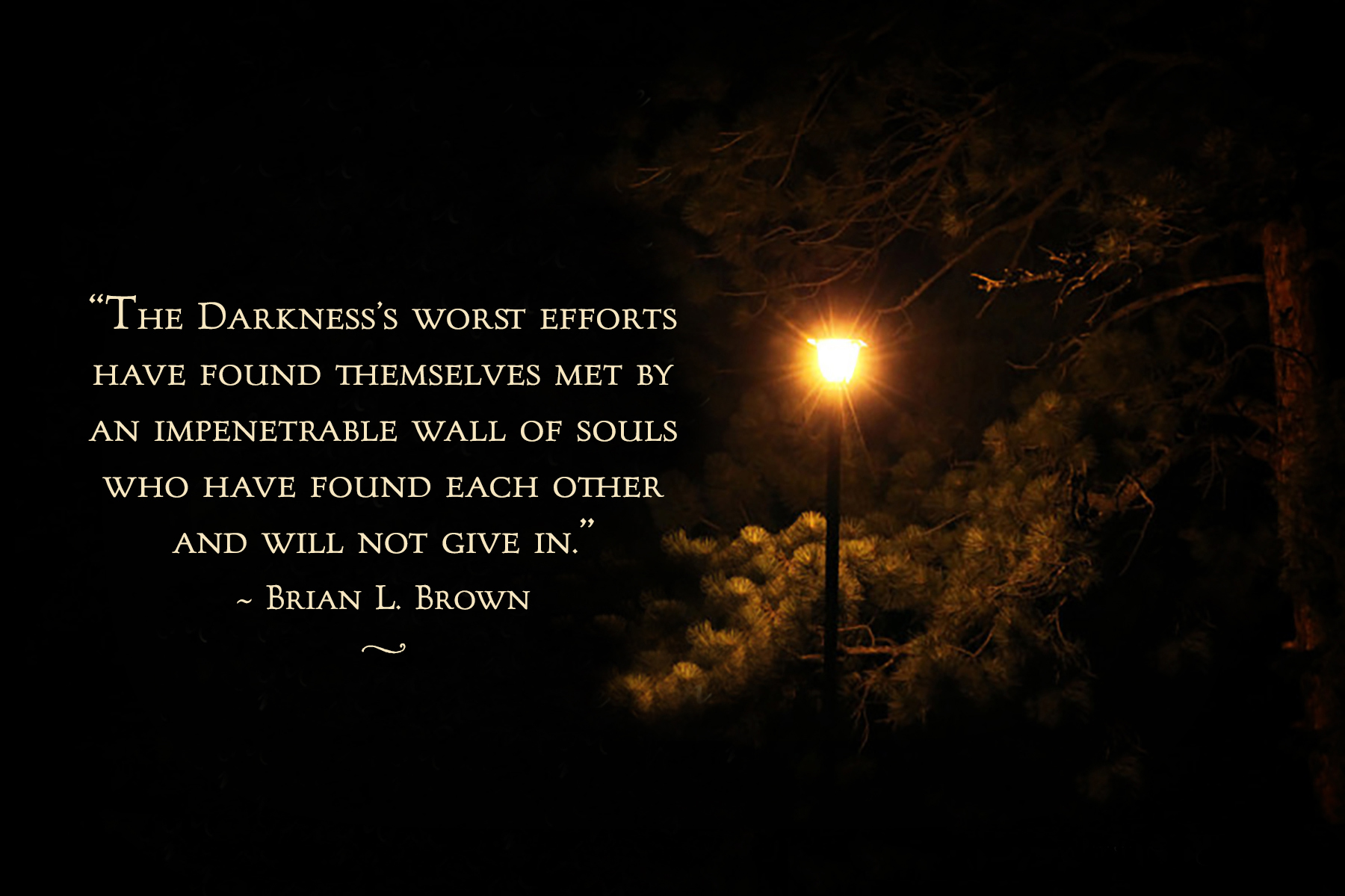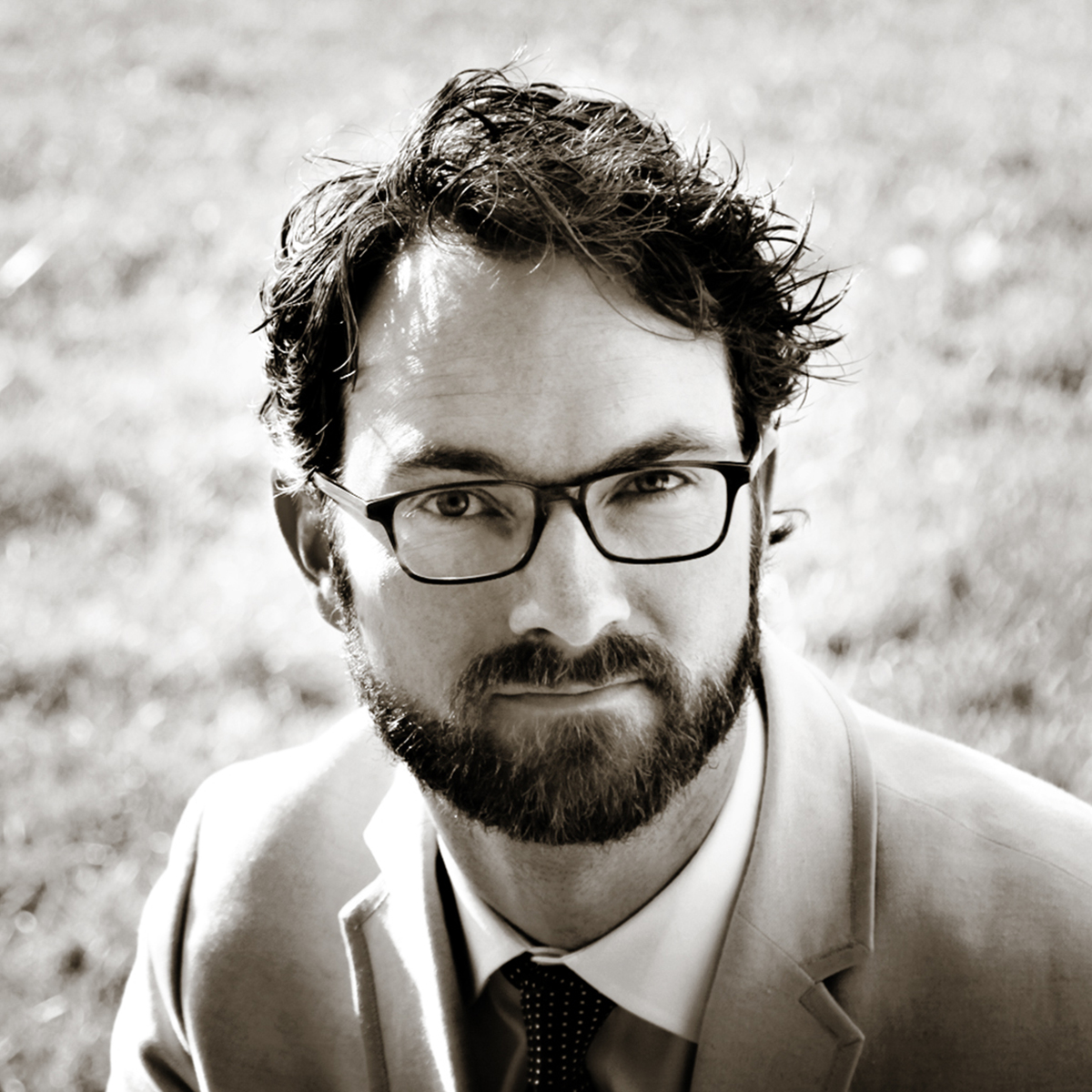What would the picture look like if you described a perfect Christmas?
I suspect it would involve many of the same elements for nearly all of us.
The cast: A whole bunch of people—family and friends—laughing together. They know each other intimately, love each other, and thoroughly enjoy each other’s company. Nobody feels left out, and nobody’s missing. (Except Joey; he would ruin it.)
The setting: Somebody’s living room, a place where the people have obviously spent many hours together before. There’s a crackling fire in the wood fireplace. The decorations are tasteful and joyous (though not necessarily extravagant); a mixture of just the right colors with mementos that bring special moments from the past to the party. Not a smartphone is to be seen. The sparkling warmth, the kind of thing movies spend millions of dollars to make you feel, is inescapable.
The scene: There’s a flow to the day; without sacrificing a single meaningful one-on-one conversation, the time is marked by intentionality. Beautiful traditions play out exactly the way they’re supposed to. Church earlier was glorious; the perfect blend of the ancient and mystical with the nearness and comforting. People sing together; nobody opts out with a self-conscious “I can’t sing,” and everybody smiles inwardly at Uncle So-and-So’s tone-deaf braying. Dinner is more like a feast at Hogwarts or Rivendell than anything you’d expect to see in normal life. There are no distractions; no painful reminders that life outside all this exists. Everybody knows the rhythm of the day, and enters the dance from beginning to end with the confidence of people who know not only what to expect but why.
Most of us imagine a cast like that because it’s so opposite to what we actually have; we either long for even one close friend, or our group of family and friends is fragmented or entirely broken. Very few of us have the aesthetic equipment to come anywhere close to the setting; our neighborhoods (if built remotely recently) are concrete and asphalt, located a convenient distance from Stuff Mart, and we escape from them to places worth caring about through our magic screens. And few of us left alive have ever seen a community with the kind of shared celebratory language such a Christmas would require.
No matter how reasonable we are, most of us can’t survive a December without at least a moment of wishing our Christmas were a little more like this ideal one, in at least one or two ways. And that’s because the cast, setting, and scene described include almost every imaginable element of a close-knit community.
Almost.
The most significant thing that goes unseen in that picture is the prerequisite for any kind of real community; the thing the people in our picture are taking a break from for the holiday: shared purpose.
Community is not a group of people who like each other.
In real community, there is work being done together; life being lived together headed in the same direction.
There is the discomfiting and even constricting inconvenience of shared work, and the conformity doing it successfully sometimes requires. It is intergenerational, not just in the sense of older and younger together, but also in the sense that you expect it to outlast you. And its members love it, in spite of all its faults, not because it is “community” in the abstract, but because (even though it includes Joey) it is theirs.
That is not an experience many of us have had. We are each on our own conveyor belt, headed inexorably toward the world’s goals (school, job, money, success, validation) and constantly sacrificing God, places that won’t follow us, and people who can’t keep up (or who are going too fast). We self-medicate with Bible verses and occasional sermons, but stepping off the conveyor belt represents too big a step. So the direction never changes. “Gathering” for the holidays actually represents a bunch of different people briefly pausing their own conveyor belts to pretend they are in community with each other. The kinds of beautiful places, singing and art, traditions, and meaning that only come with life together never have a chance to take shape. We are a generation of renters, and almost everything from our current city to our home to our traditions to our friendships is just something someone else built; a shell we can inhabit till it’s time to move on to the next one.
However, unless we make an intentional choice followed by a step of faith, community (like all the things that both contribute to and are the byproduct of it) will only start when we plant a flag.
Plant a Flag
In John Bunyan’s Pilgrim’s Progress, Christian undertakes a solitary journey to heaven. It must be done alone. Other people’s value is judged only by whether they happen to be traveling in the same direction on their own isolated journeys. The value of anything is judged by whether it can clearly help or hinder on the journey. The church is nowhere to be found.
Contemporary Protestants are, by and large, heirs to the legacy of Bunyan’s story. We are supposed to be alone, cut off from each other, and a search for meaning in the things around us—other than the Bible—is alien to our ethos. It’s just a Christmas carol. Just a story. Just a place that’s going to burn someday. Just a silly tradition. Our subset of the faith long since rejected symbols, visual art, the church calendar, rituals, poetry, and the like as either irrelevant, distracting, or actively bad. Fix your eyes on what is ahead.
When my wife Christina and I moved to Colorado Springs in 2009, we moved into a life like the one Bunyan envisioned for us. We looked at the cookie-cutter suburbs around us, the lifestyle that made no time for beauty, the total lack of decent coffee, and figured we’d simply tread water till we could move eastward and pick up where we left off.
It never happened, and thank God for that.
And it was almost two years before we realized that this intentional standoffishness was no way to live. We weren’t even locked in a castle, yet we were passively pining with hands clasped, repeating, “Someday my prince will come!” We longed for community but avoided people, except in strategic (and mostly futile) forays to try to acquire a best friend or two. We were on a solitary journey.
Yet for some reason, we sheepishly began to grasp, for this time in our lives, God had placed us here.
And so we asked for the grace to learn to love this place and its people for what they were. After all, we were asking them to do the same for us.
We joined a small church where we could be known, and perhaps where we could do some good. I asked the pastor how I could help, and we devised a plan to organize some lectures. Next thing we knew, 250 people turned out to hear Michael Ward speak on C.S. Lewis. Many were artists. Most had stories just like ours. Without any idea of what we were doing, we’d planted a flag—and people had flocked to it.
It turned out that sitting in a house, cut off from everyone by miles of asphalt and years of choices, wondering where the people like us were, was quite a common experience.
Be a Placemaker
And we only found this out when we gave our home, our city, permission to be a place.
Much like people presented with divine grace, places only realize their potential when they are treated as though they already have. They become beautiful because they are loved.
Colorado Springs wasn’t 14th century Italy. Its rhythms weren’t built around the Christian kairos-oriented calendar. You were unlikely to even know your next-door neighbors, let alone make meaning together. Two thirds of it had only appeared in the last 30 years. But, almost by accident, a few people who loved ancient beauty, who wanted stories they could tell their children, and who wanted lives marked by a shared devotion to the Things That Matter, decided they would bring these desires to bear on the place where God had put them. They decided that even if they were alone, even if they were a mess, even if they weren’t as mature or as well educated as they would like, they would share what they had. They decided to be placemakers.
Next thing we knew, people were coming out of the woodwork to join this new Society. People even moved across the state, across the country to become a part of it. A guild of artists appeared. Churches came forward, wanting to be homes for God’s people, not just weekly sources of inspiration for the conveyor belt riders. Sister projects began to take shape in other cities. And at home, Christina and I found ourselves surrounded by more astounding people, more real community doing life together, than we had any right to. People planted—and things grew.
If this had just happened once, I wouldn’t hold it up as a case study—there’s nothing worse than somebody who got lucky having the presumption to write about how you should follow their example. But it has happened repeatedly—this is only the most recent instance I’ve encountered. Every time I have seen people plant a flag and commit to becoming placemakers—stepping off the conveyor belt and trying to build one small thing around what is Good and True and Beautiful—it has happened.
Houses have become homes. Antiquated traditions like dinner parties and singing together have become normal. Lonely people have found cohesive communities ready to welcome them in. People have fought harder to stay in one place for the long haul, and remain by each other’s sides standing together against the Darkness. Sometimes the differences have been slow and small; a moment of welcome that led to a song being written; strangers ceasing to be so. In other cases (or was it just later in the same story?) the Darkness’s worst efforts have found themselves met by an impenetrable wall of souls who have found each other and will not give in.
Let Things Have Meaning Again
Five years later, much has changed. As I look around my home this Advent, I see it filled with meaning and intentionality—much of it wasn’t there the day before Thanksgiving, and almost none of it (memories, stories, original works of art, rhythms and practices) was there five years ago.
I’m a pretty intentional parent, but I’ve told my two year-old son more about God in the past five days than I have in the past year—because I can scarcely help it.
You see, Christmas is the one time of year evangelical Protestants reject John Bunyan’s legacy. Every December, almost everything imaginable is suffused with meaning. Nativity scenes, trees, carols, Advent calendars and home liturgies, family traditions, special food, church services where we permit far more ancient things and symbolism and dressing up and beauty, even the holiday itself (a Catholic church creation). Everything is an opportunity for my son to ask, “Why?” and for me to answer; to explain the meaning behind the beauty.
We were made to live like this; to participate in the Great Dance; to not only see God’s handiwork everywhere, but to participate in it, and to joyfully create in response. To have the experience and grasp the meaning.
To reject the idea that there is any such thing as just anything, and instead to live sacramentally; putting up a Christmas tree to tell anyone who enters our home that we know in our hearts, against all appearances, that the King is coming.
And this is why Christmas hurts so much more than the rest of the year. We are closer than at any other time of year to life as God designed us to live it—and to be close without having is more than we can bear.
It is also why Christmas is a beautiful building block to begin to plant a flag, make a place, and let things have their proper meaning again.
If you come to my town today, you’ll find a great many flaws. Mistakes in the process of being made, sometimes on a large scale. But you’ll also find hundreds and hundreds of people who are about to celebrate Christmas with no notion of being alone. They will sing carols together (especially the old ones!), create art for each other, and flood each other’s homes with unsolicited baked goods and with the gift of Presence.
It’s not the picture-perfect Christmas. Quite aside from the fact that there never was such a thing, we probably have a few generations to go before our great-grandchildren can take for granted the kinds of things of which we’ve barely begun to dream. But we are no longer waiting for Santa to bring us community. The King has already come, and will come again. Till He does, we will respond to His first coming together—by building messy little outposts of His Kingdom in homes and parishes.
We cannot defeat the Darkness on our own. But we can fill this December with so many victories in the form of carols and cookies shared, welcomes offered, that hell will be the hotter in its impotence.
Brian Brown is the founder and director of the Anselm Society, whose mission is a renaissance of the Christian imagination. He also serves as Director of Strategic Initiatives at the Colson Center for Christian Worldview. Brian lives with his wife Christina and their two children in Colorado, where they mix cocktails, hunt for historic architecture, and see how many people they can squeeze into their house for scintillating conversation.
Leave a Reply
A Field Guide to Cultivating ~ Essentials to Cultivating a Whole Life, Rooted in Christ, and Flourishing in Fellowship
Enjoy our gift to you as our Welcome to Cultivating! Discover the purpose of The Cultivating Project, and how you might find a "What, you too?" experience here with this fellowship of makers!



Thank you so much for this deep honesty and truth and glorious proclamation all at once!!
thank you for that encouragement to all of us to “step off the conveyor belt and try to build one small thing around what is Good and True and Beautiful”
Brian, this is a wonderful piece. I just read through it slowly and aloud, hoping the words will sink in. I’m encouraged to hope and try here at home. Thank you.
Brian
This is just what I needed to read. I can’t tell you how encouraging this is. Thank you…so much.
Brian
This is just what I needed to read. I can’t tell you how encouraging this is. Thank you…so much.
Wonderfully written essay, Mr. Brown. I stepped off the conveyor belt, not because I am brave but because the belt broke and I still had to get somewhere. I picked Colorado Springs out of a hat, so to speak, and set about trying to make a place here. Meeting you, Brian, and being introduced to Anselm Society was a start, for which I am grateful. 🙂
Thank you, Brian, for this essay. It’s exactly what I needed this particular advent season. I love your comment about community, that it’s not a group because the people like each other, but because they are living life together in the same direction. That’s what Anselm has become. I hope Nancy and I can become more a part of this community in the coming year.